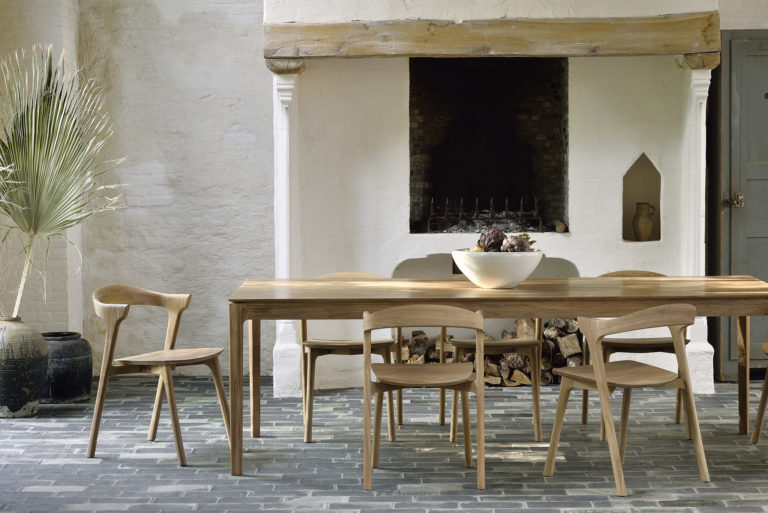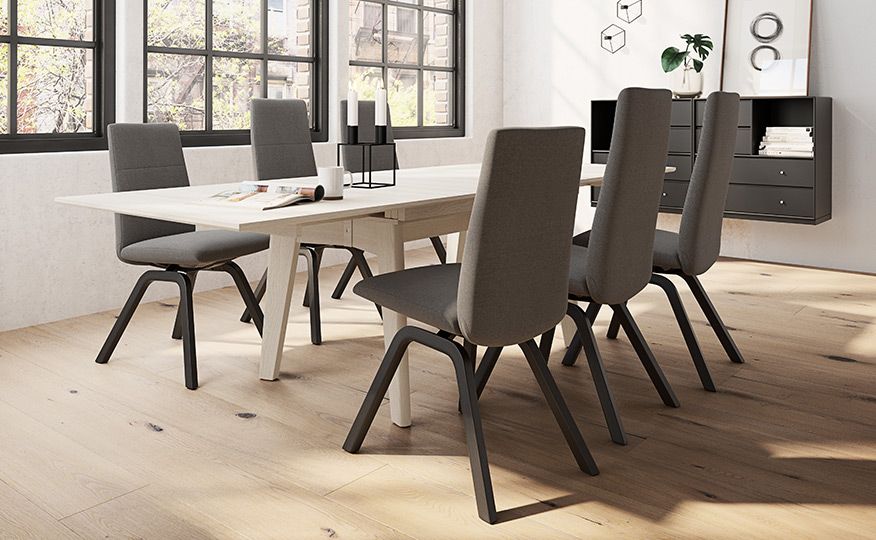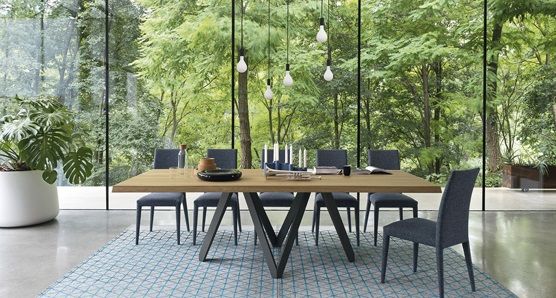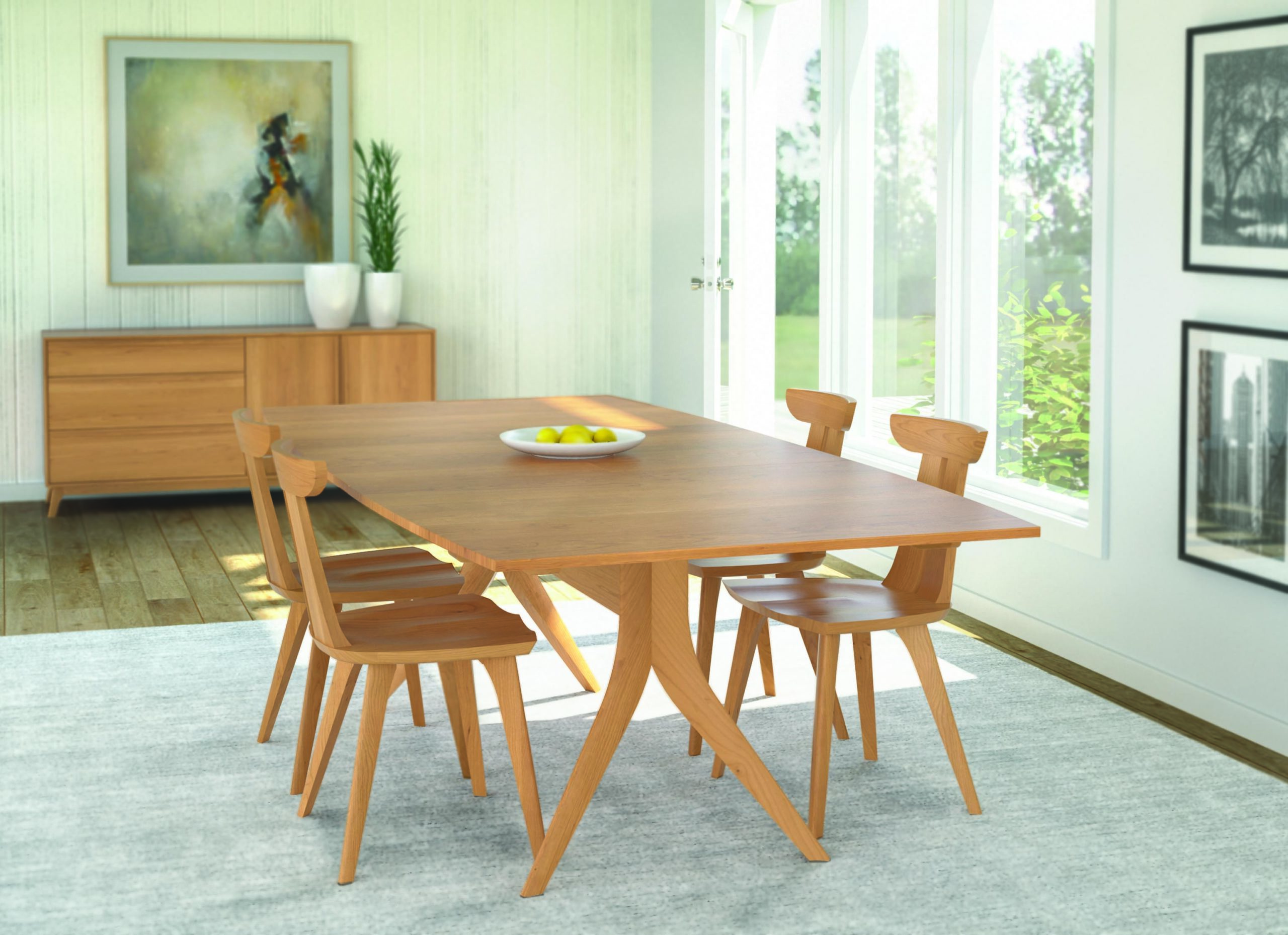
When it comes to designing your dining room, you want your dining room to be a place that’s comfortable and inviting where family and friends can gather for special memories. One of the decisions you’ll face when designing your dining room is whether or not you need a rug. Rugs can add texture and color to a space, while also helping define and separate the different areas. But deciding if that’s right for your dining room isn’t always an easy call- so how do you know when a rug should be part of the design plan? The goal of including a rug under your dining table is to ensure that including it will add value – both aesthetically and practically – that compliments what already exists in your living space.
What to Consider Before Buying a Rug For Your Dining Room Table
When deciding whether or not you need a rug beneath your dining table, there are a few factors to consider. The type of dining room you have  should be taken into account. If it’s part of an open concept layout, placing a rug underneath will help define the area and serve as an anchor point in the room. Having a rug underneath your dining table will bring a variety of benefits, and you just need to consider whether or not it is a necessity for your home.
should be taken into account. If it’s part of an open concept layout, placing a rug underneath will help define the area and serve as an anchor point in the room. Having a rug underneath your dining table will bring a variety of benefits, and you just need to consider whether or not it is a necessity for your home.
With that said, you really don’t need a rug under your dining room table. Rugs usually serve as an accent piece to tie the dining room design together, but it’s not essential when dining around the table. A smaller dining room might not benefit from an additional rug as much, as it runs the risk of making it look too crowded. Additionally, spills and dirt marks quickly show up on rugs which make them difficult to clean, especially with young children or pets near the dining table. Ultimately, it’s up to you to decide which option works best for your dining needs and how much extra comfort is desired.
Benefits of a Rug Under Your Dining Room Table
Adding a rug to the dining room can bring great benefits. When dining tables are equipped with a centerpiece or other decorative elements, adding a rug can bring everything together into a unified design. If your dining room is a closed-off space but lacks carpeting, incorporating a large area rug will instantly make the dining atmosphere more warm and inviting. Additionally, if your dining space includes hardwoods or other slick floorings  such as tile or vinyl, adding cushioning with a rug may help reduce noise levels for all those seated at the table during mealtime. Another factor to consider is how much foot traffic goes through that dining space; high foot traffic can easily leave scuff marks on hardwood floors without added protection from an area rug.
such as tile or vinyl, adding cushioning with a rug may help reduce noise levels for all those seated at the table during mealtime. Another factor to consider is how much foot traffic goes through that dining space; high foot traffic can easily leave scuff marks on hardwood floors without added protection from an area rug.
Not only will it add texture and color to the dining room, but it can also help protect your dining area from potential wear and tear caused by spills or dragging furniture. Besides that, having a dining table on top of a rug can give your dining room a more finished look while making furniture easier to move around if needed.
The rug also provides cushioning and comfort when dining chairs are in use; this helps keep them stable as well as easing any discomfort that could come with dining for longer periods of time. Opting for a low-pile option will also create less friction when you move furniture around and make cleanup a breeze.
Ultimately, due to its multi-functional properties, having a rug under the dining table is a wise investment for any homeowner looking for convenience and style within their dining area.
Choosing the Best Rug
When selecting the ideal rug to place under your dining table, there are a few things to consider. First, consider the shape of the dining table, since this will determine what shape or size of rug you need. If your dining table is round, opt for a round rug that partially shows on either side; if it’s  rectangular or square, you can go for picks like runners that fully extend out from under the dining table.
rectangular or square, you can go for picks like runners that fully extend out from under the dining table.
In terms of size, dining tables typically work well with rectangular or round rugs that are larger than the dining table itself so that each chair remains on the rug when it is pushed away from the table. Select a rug that extends at least 18 inches beyond each side and end of the dining table.
When choosing the right rug for your dining room table, consider texture, color, shapes and patterns — all of which will contribute to how inviting or imposing your dining space appears to guests. You should also be cognizant of surface materials, such as choosing an area rug that contains loops or cut-pile carpets. Pay careful attention to pile height – a too-low pile could mean getting stuck on snagged corners while higher piles may be less crisp in terms of pattern details due to its bulkier structure. To bring depth and color into the area a textured patterned rug in light colors may be appropriate.
Once you have chosen your perfect dining table centerpiece, sit back, relax and enjoy sharing wonderful meals with family and friends!
Work With Our Expert Designers Today
A well-chosen rug can make your dining room table the focal point of your home. But with so many options available, it’s important to consider a few factors before making your purchase. First, think about the benefits of having a rug under your dining room table, but also consider whether it is a necessity for your home. If you are still torn about whether or not you need a rug for your dining room table or are unsure of what rug would look best, contact us here at Ambiente Modern Furniture. We have two locations, one in Raleigh, North Carolina, and one in Asheville, North Carolina. Feel free to stop by either of our locations at your earliest convenience. We look forward to seeing you soon!


